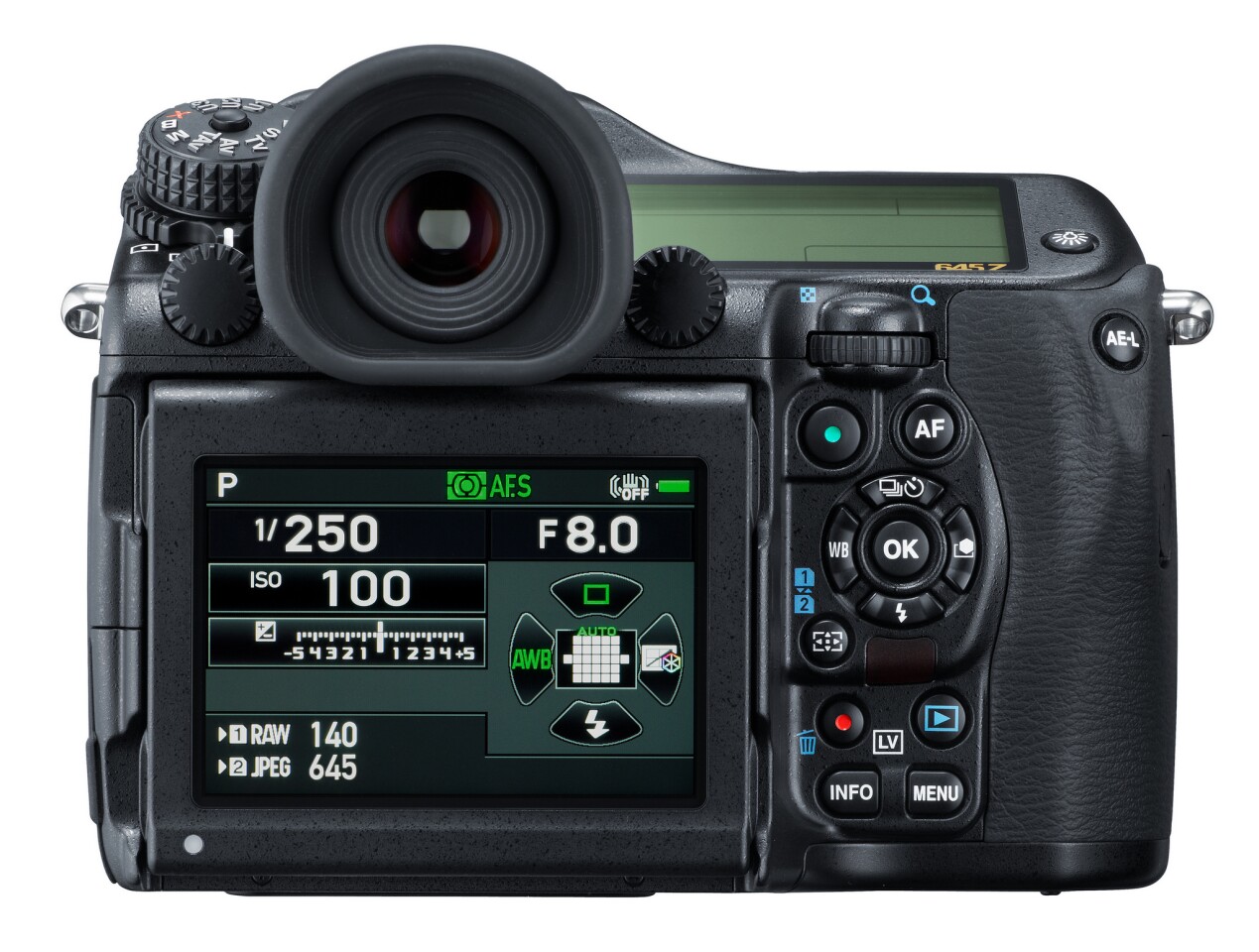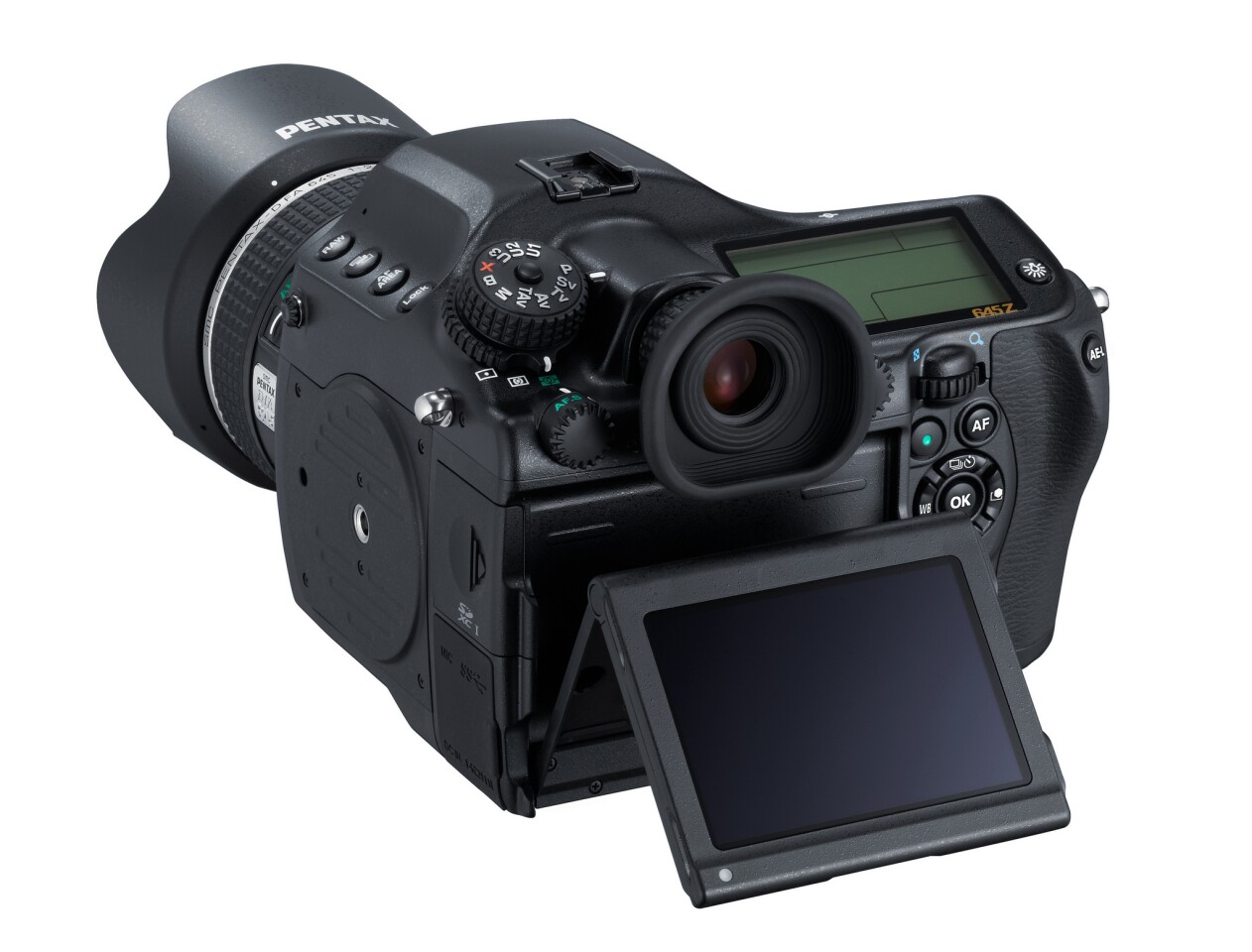Just a few months ago, there were no medium-format cameras with CMOS sensors. Now, it feels like you can't turn around in a camera store without bumping into one. Following hot on the heels of the Hasselblad H5D-50c and Phase One IQ250 is the Pentax 645Z, from Ricoh Imaging. An update to the Pentax 645D, the new US$8,500 medium-format DSLR features a 51.4-megapixel CMOS sensor, a wide sensitivity range, and Full HD video recording.
The 51.4-megapixel CMOS sensor at the heart of the 645Z measures 44 x 33 mm. This makes it about 1.7 times larger than that of a 35mm-format full-frame sensor, and the same size as that in other recent medium-format shooters. However, by pairing it with its PRIME III imaging engine, which first debuted in the Pentax K-3, Pentax appears to have been able to squeeze considerably better performance out of it, than its rivals.
The camera boasts a number of specifications which are almost unheard of in the medium-format market. It has an ISO range of 100-204,800, enabling shooting in lighting conditions that comparable cameras would be scared of, and can knock out bursts of 10 RAW or 30 JPEG images at a speed of 3 fps. While that might not sound like much compared to the likes of the Nikon D4S, it's twice the speed of its medium-format rivals. Again getting one up on the competition, the Pentax 645Z can also record Full HD video at 60i/50i/30p/25p/24p.
The Safox 11 autofocus system, which also featured in the Pentax K-3, has 27 focus points, including 25 cross type. It's said to perform well even in lower light situations, and has a working range of –3EV to +18EV. The Pentax Real-Time Scene Analysis System, which consists of an RGB light-metering sensor with 86,000 pixels and a fine-tuned algorithm, is on hand to ensure improved exposure-control, white-balance adjustment, and enhanced autofocusing accuracy.

Measuring a mighty 156 x 117 x 123 mm (6.1 x 4.6 x 4.8 in) there's plenty of space for all the controls that you'd expect on a camera of this standard. The optical viewfinder on the rear is joined by a 3.2-inch tilting LCD with 1,037k dots, which should make it easier to shoot in a variety of situations, and can also be used for live view. On the top there's a large monochrome LCD for displaying shooting information, and there are dual tripod mounts for using the camera in landscape or portrait positions.
With a robust build quality, the 645Z promises to be a truly go-anywhere medium-format camera, if you don't mind the 1,550 g (3 lb 6.7 oz) weight, that is. The exterior housing and the LCD monitor frame are made of sturdy yet lightweight magnesium alloy, while the chassis is made of die-cast aluminum. Like many other Pentax DSLRs, the camera is weather-resistant and dustproof, with 76 seals applied around it. It's also cold-resistant against temperatures as low as -10°C (14ºF).

While it lacks the built-in Wi-Fi ability of the Phase One, the two SD slots of the 645Z mean it is compatible with both Eye-Fi cards and the FluCard for Pentax, which we have seen with the K-3. The latter allows users to release the 645Z’s shutter, check the live-view image, and browse and download images recorded on the card with smartphones running the iOS or Android apps. There's also the option of using the USB 3.0 connection for more tethered control.
The Pentax 645Z will be available from June for a price of $8,500 for the body only. While that might sound like a lot, it's worth remembering that the Hasselblad H5D-50c and Phase One IQ250 come in at $27,500 and $34,990 respectively.
Product page: Pentax 645Z










